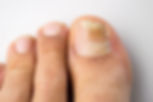

Treatment
The selection of treatment depends on the type of wart present, its location and size, and the patient's age. In children, the simplest treatments are recommended. In more resistant lesions in older patients, the treatment may need to be more aggressive. A common and effective treatment product used is Cantharidin. It is a strong vesicant extracted from the tropical green blister beetle. When applied to the wart, this acid forms a local epidermal tissue reaction that is intense and produces a blister formation. Cantharidin is a very effective treatment for resistant warts.
Surgical removal of warts is a treatment for severe resistant warts. Electrodesiccation with curettage is one method. The electrodesiccation technique involves the use of a Hyfrecator unit with a needle-tip applicator on a hand-held instrument. The wart is anesthetized with a local anesthetic agent, and the surrounding area is prepped. Surgical removal of the wart in the superficial layer of the skin is conducted, followed by electrodesiccation. It is an effective and consistent method of removing lower extremity warts documented in the literature. To book a consultation with us, call now.
Surgical and non-surgical options are available for Wart excision at the West Vancouver Foot clinic.
Surgical Wart excision procedures are conducted at West Vancouver Foot Clinic






Effective Treatment for Nail Disorders in West Vancouver
West Vancouver Foot Clinic offers you effective treatment for nail disorders in West Vancouver. The nail has several distinct anatomical areas. The hard nail plate grows from a nail matrix that is made of specialized epithelial cells. The nail bed is beneath the nail plate and has an adequate blood supply. It provides adherence and support to the nail plate. The nail folds help to seal the nail plate in place. In their protective role, nails bear the brunt of daily activities. Walking, running, wearing shoes or participating in sports are just a few of the stresses and strains the feet must endure. All or a portion of the nail plate can be damaged when the feet are injured or abused.
Nail problems are commonly caused by improper trimming, minor injuries or repeated trauma. Some nail disorders can also be congenital. Early care is best for nail health. Proper trimming (along the contour) regularly and wearing well-fitted, low to moderately heeled shoes can help keep the toenails in good shape. For the best advice on nail care, visit our clinic.
Treatment for Fungal Infections
Treatment is best begun at the early stages of infection. The accumulation of debris under the nail plate can lead to an ingrown nail or a more serious bacterial infection that can spread beyond the foot. To reduce the pain associated with a thickened and infected nail, the thickness may be reduced by filing the nail plate down with a special burr. Filing will not, however, prevent the infection from spreading. Oral and topical medications may be prescribed when:
Medication may or may not eliminate the fungus. Often, after the medication is discontinued, the fungus recurs. Oral prescription antifungal medication must be monitored very carefully for possible side effects.
Topical medications, oral medications and nail laser treatments are all options for treating stubborn nail fungus.






Treatment for Hematoma
The blood beneath the toenail is known as a Hematoma. It might indicate a fractured bone, especially after an injury (such as dropping a heavy object on the end of the toe). The toe should be examined by the podiatrist, who may order an X-ray to determine the most appropriate treatment.
If the hematoma is treated within the first few hours of forming, the podiatrist will create a tiny hole in the nail plate using a fine point drill or scalpel. It releases the blood and relieves pain. If several days have passed and the blood clot becomes painful, the nail plate may require removal so that the nail bed can be cleaned. Podiatrists often prepare to remove the nail plate whenever blood forms beneath it because the blood can be a source of infection.




Treatment for Ingrown Toenails
Painful ingrown toenails may be congenital, caused by an over the curvature of the nail or an imbalance between the width of the nail plate and the nail bed. Toe injuries that change the nail's contour also can lead to an ingrown toenail. Toe deformities (such as bunions that force the big toe to lean to the second toe), high-heeled or narrow pointed shoes can put pressure between the nail and soft tissues, eventually forcing the nail to grow into the skin. Symptoms such as redness, swelling and infection make the toe very painful. Ingrown nails can be accompanied by other toe disorders, such as excess surrounding tissue or an outgrowth of bone beneath the nail plate.
Minor cosmetic toenail surgery, under local anesthesia infiltration, is often necessary to ease the pain and remove the offending nail border. Only a portion of the nail may require removal. If the entire nail is affected or there is severe nail deformity, the entire nail plate and matrix (the cells that grow the nail) may be completely removed.
Ingrown toenail surgery is a simple and common procedure conducted at the West Vancouver Foot Clinic with a permanent solution




Partial Nail Removal
For most cases of ingrown toenails, only the portion of the nail that is growing into the skin is removed. If both sides of the nail are ingrown, they may be removed during one procedure. The nail root and matrix are then destroyed so that regrowth of the offending nail border does not occur. The procedure is usually permanent.





How Will the Toe Look After Surgery?
After surgery to permanently remove the nail plate, the body generates hardened skin covering the sensitive nail bed. When this covering has developed, normal activities can be resumed. Women can also use nail polish in this area.



Care After Surgery
Gentle care and precision are used to anesthetize the patient’s foot. So, most people experience very little pain immediately following nail surgery and during the healing process, which lasts approximately three weeks. It is recommended that the patient wears open-toe sandals during the healing process.



